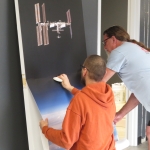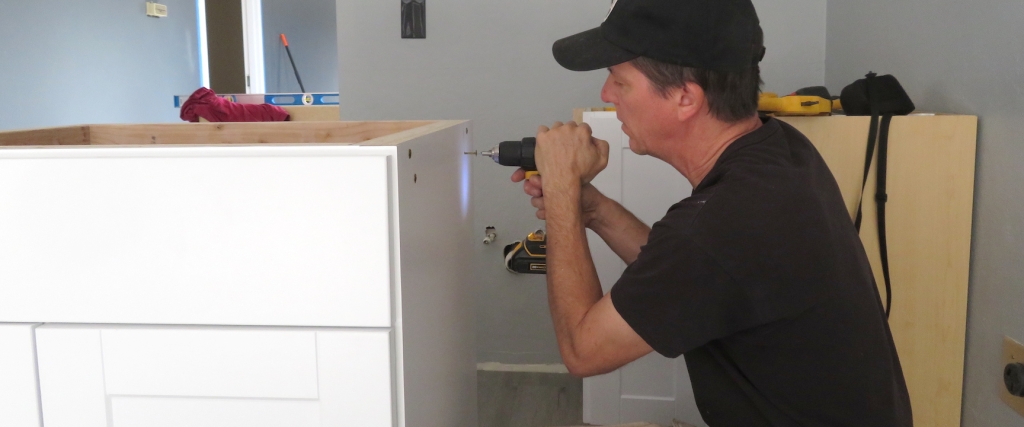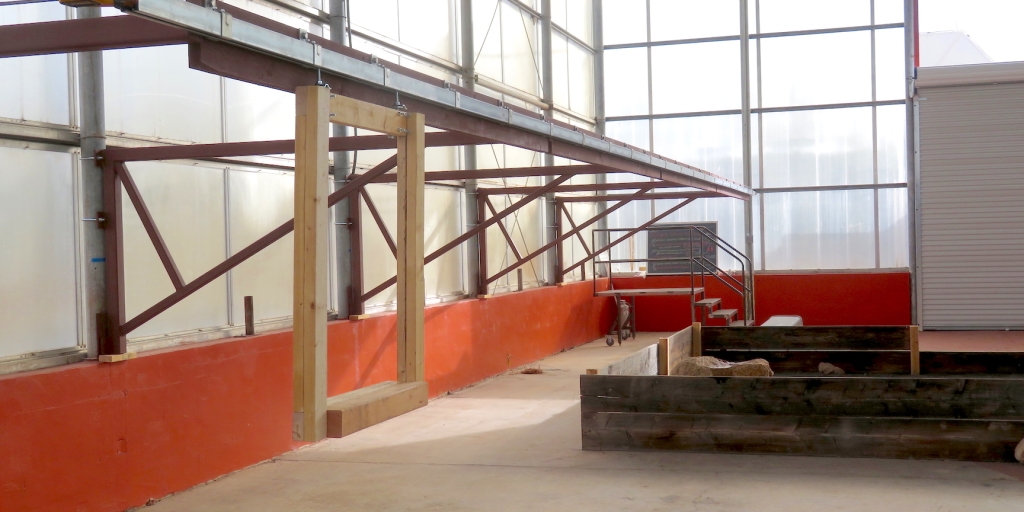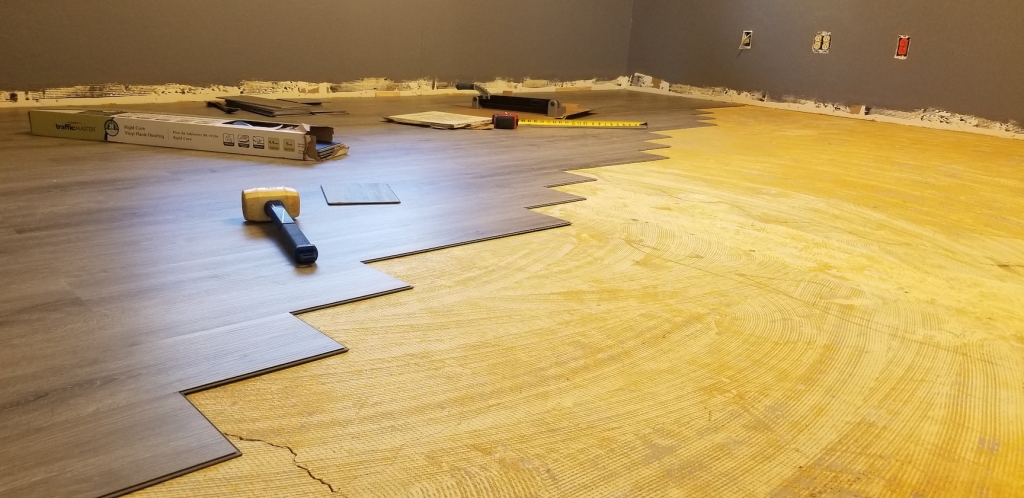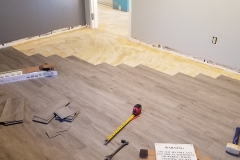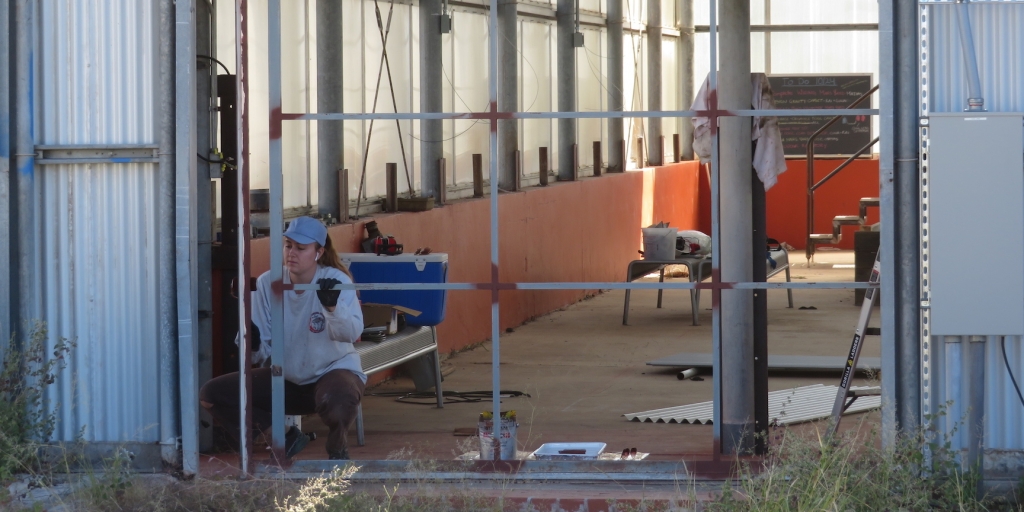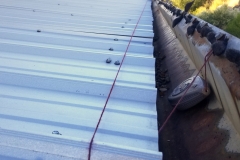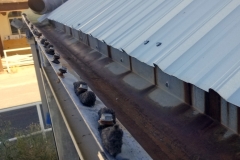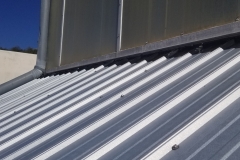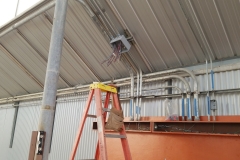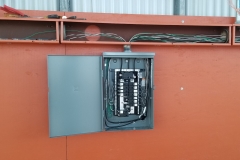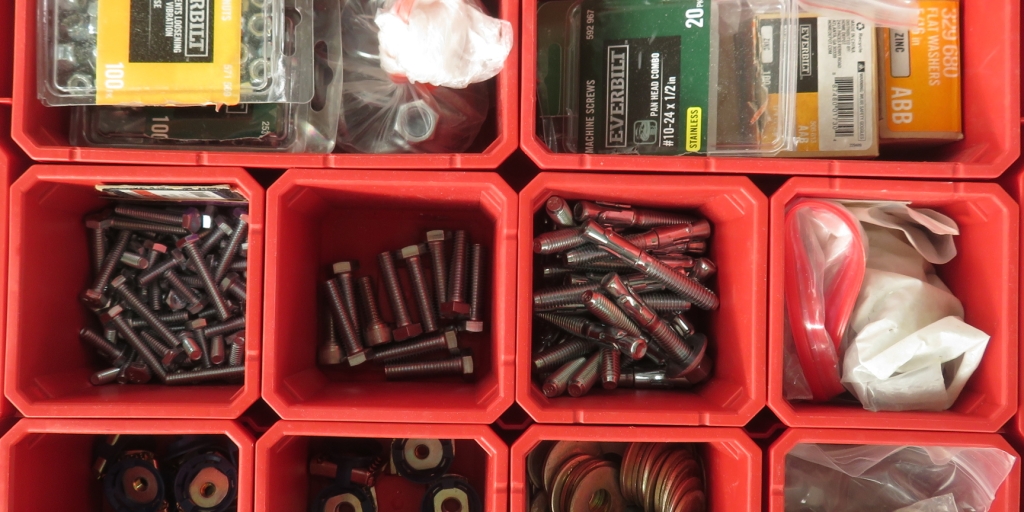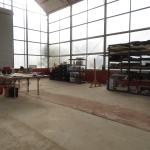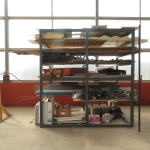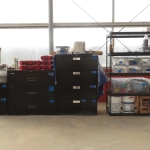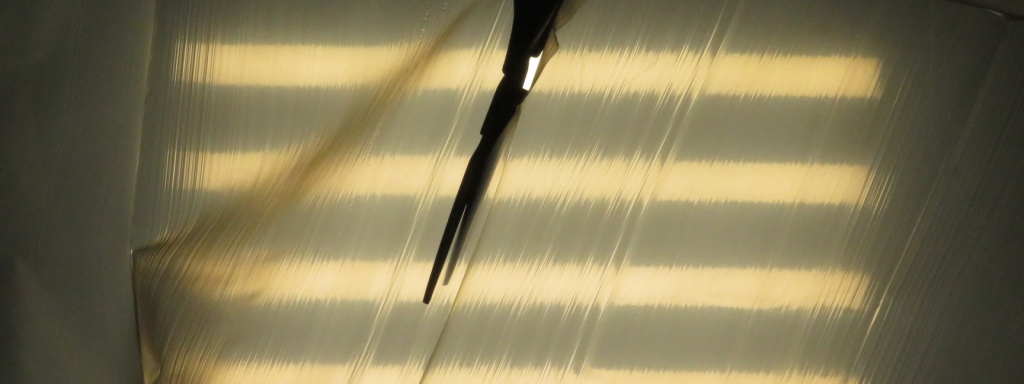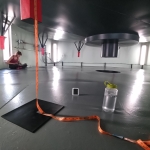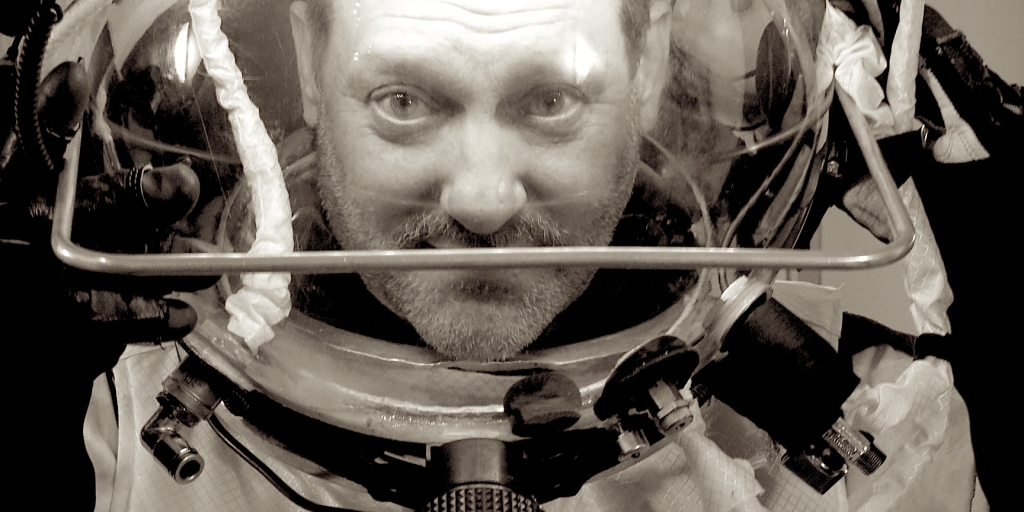Five generations of human space exploration
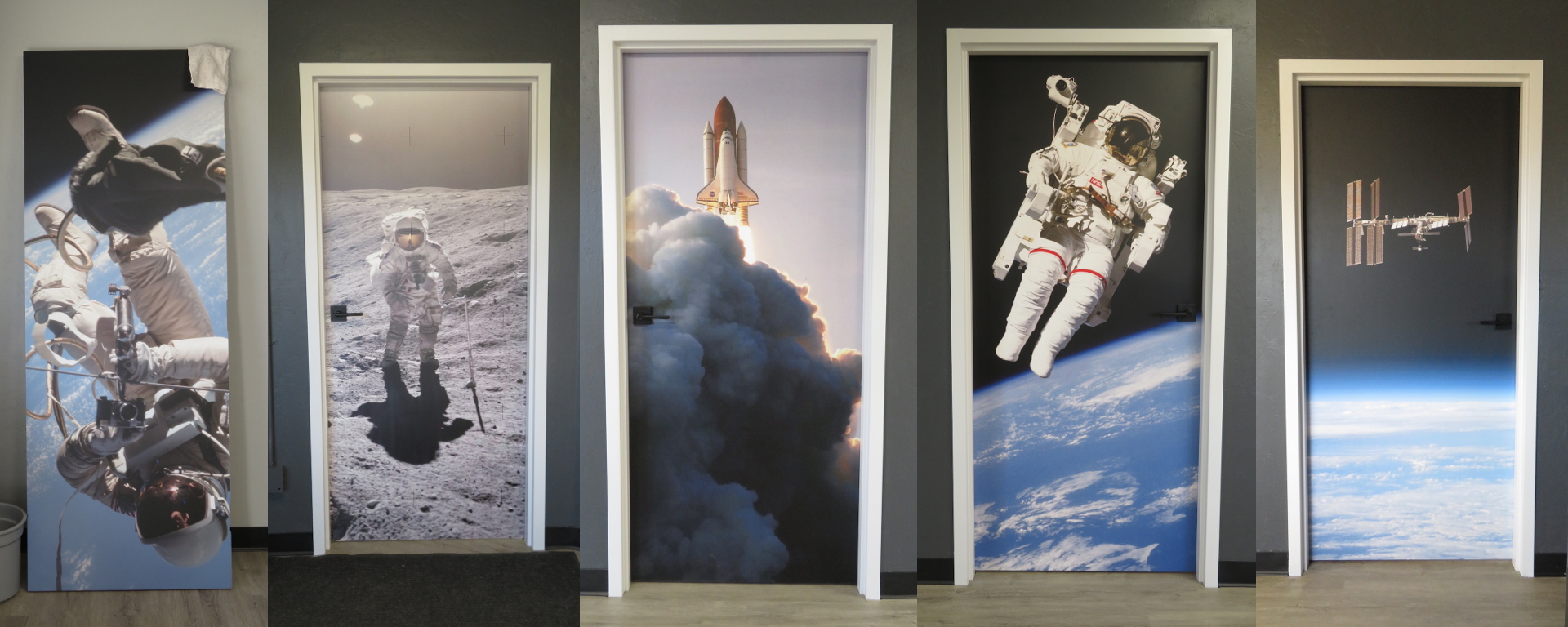
Each of the five interior doors at the SAM Operations Center now celebrates one decade in human space exploration, with Mercury-Gemini, Apollo, Space Shuttle, and ISS in bold, large format prints. We are proud to make five generations of technological advancement and scientific endeavor central to our new Operations Center and Mission Control.
This was our holiday gift to ourselves, something out of the ordinary, something that will for many years to come give visitors reason to smile when they enter our facilities. We thank Ann Persnel and the team at West Press of Tucson for their expert printing and installation.


